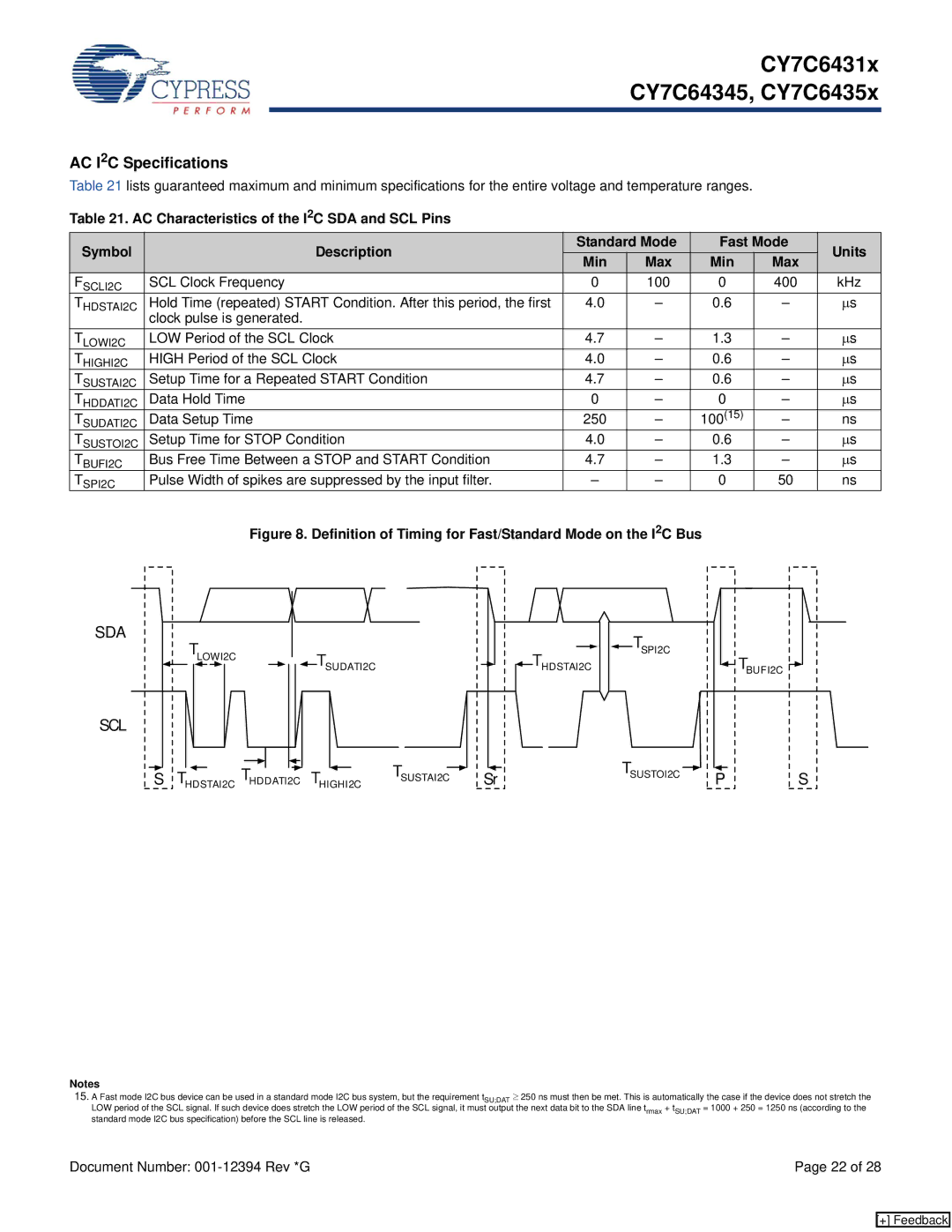
CY7C6431x
CY7C64345, CY7C6435x
AC I2C Specifications
Table 21 lists guaranteed maximum and minimum specifications for the entire voltage and temperature ranges.
Table 21. AC Characteristics of the I2C SDA and SCL Pins
Symbol | Description | Standard Mode | Fast Mode | Units | |||
Min | Max | Min | Max | ||||
|
|
| |||||
FSCLI2C | SCL Clock Frequency | 0 | 100 | 0 | 400 | kHz | |
THDSTAI2C | Hold Time (repeated) START Condition. After this period, the first | 4.0 | – | 0.6 | – | μs | |
| clock pulse is generated. |
|
|
|
|
| |
TLOWI2C | LOW Period of the SCL Clock | 4.7 | – | 1.3 | – | μs | |
THIGHI2C | HIGH Period of the SCL Clock | 4.0 | – | 0.6 | – | μs | |
TSUSTAI2C | Setup Time for a Repeated START Condition | 4.7 | – | 0.6 | – | μs | |
THDDATI2C | Data Hold Time | 0 | – | 0 | – | μs | |
TSUDATI2C | Data Setup Time | 250 | – | 100(15) | – | ns | |
TSUSTOI2C | Setup Time for STOP Condition | 4.0 | – | 0.6 | – | μs | |
TBUFI2C | Bus Free Time Between a STOP and START Condition | 4.7 | – | 1.3 | – | μs | |
TSPI2C | Pulse Width of spikes are suppressed by the input filter. | – | – | 0 | 50 | ns | |
Figure 8. Definition of Timing for Fast/Standard Mode on the I2C Bus
SDA | TLOWI2C |
|
|
|
|
| TSUDATI2C |
| |
|
|
|
| |
SCL |
|
|
|
|
S | T | T | T | TSUSTAI2C |
HDDATI2C |
| |||
| HDSTAI2C |
| HIGHI2C |
|
![]()
![]() THDSTAI2C
THDSTAI2C
![]() Sr
Sr
TSPI2C |
| TBUFI2C |
|
| |
TSUSTOI2C | P | S |
|
Notes
15.A Fast mode I2C bus device can be used in a standard mode I2C bus system, but the requirement tSU;DAT ≥ 250 ns must then be met. This is automatically the case if the device does not stretch the LOW period of the SCL signal. If such device does stretch the LOW period of the SCL signal, it must output the next data bit to the SDA line trmax + tSU;DAT = 1000 + 250 = 1250 ns (according to the standard mode I2C bus specification) before the SCL line is released.
Document Number: | Page 22 of 28 |
[+] Feedback
